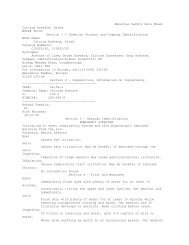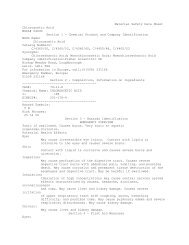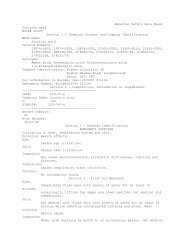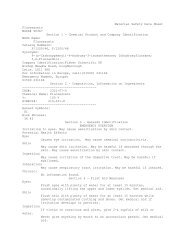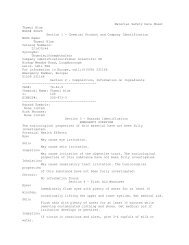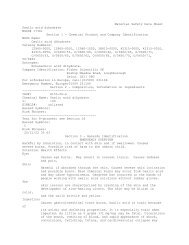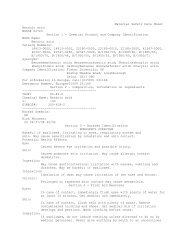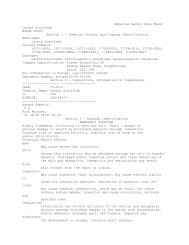Distance Education Policies & Procedures - Clayton State University
Distance Education Policies & Procedures - Clayton State University
Distance Education Policies & Procedures - Clayton State University
Create successful ePaper yourself
Turn your PDF publications into a flip-book with our unique Google optimized e-Paper software.
<strong>Clayton</strong> <strong>State</strong> offers three different types of technology-enhanced or delivered coursesin terms of scheduling – Full (95% or more online), Partial (more than 50% online) andHybrid (30% - 50% online). It is assumed that for the Hybrid course offerings a majorityof the interaction will take place in the face-to-face environment, therefore only coursesscheduled as Full or Partial will be required to maintain regular interactions betweenstudents and instructors and among students.Policy for Verification of Student Identification in <strong>Distance</strong> <strong>Education</strong><strong>Clayton</strong> <strong>State</strong> <strong>University</strong> must comply with the provisions of the United <strong>State</strong>s FederalHigher <strong>Education</strong> Opportunity Act (HEOA), Public Law 100-315 concerning theverification of student identity in distance learning.All credit bearing courses and programs offered through distance education orcorrespondence must verify that the student who registers for a course or program isthe same student who participates in, completes the course or program, and receivesacademic credit. One or more of the following methods must be used for verificationpurposes:1. An individual secure login and password (CSU username and password).All students at <strong>Clayton</strong> <strong>State</strong> <strong>University</strong> are given a unique username andpassword. While usernames are system-generated, students are not given theirinitial password until their identity is verified. A CSU username and password isrequired in order to gain access to course materials on the learning managementsystem. This authentication method is also the only means of gaining access tocourses/content delivered synchronously through web-conferencing systems.2. Proctored examinations (testing center or online verification)Examinations that are offered at <strong>Clayton</strong> <strong>State</strong>’s Testing Center are proctoredand required students to show a form of identification prior to testing.Additionally, departments and programs can choose to use third-party vendorswho use web-based means to verify and proctor examinations.3. Pedagogical and related practices that are effective in verifying student identity(video chat, review sessions, etc.)Faculty members who teach online also have a responsibility to identify andreport changes in students. These could include sudden changes in academicperformance, change in writing style, using multiple assessment types,conflicting statements made by students in discussions or on email, etc.







